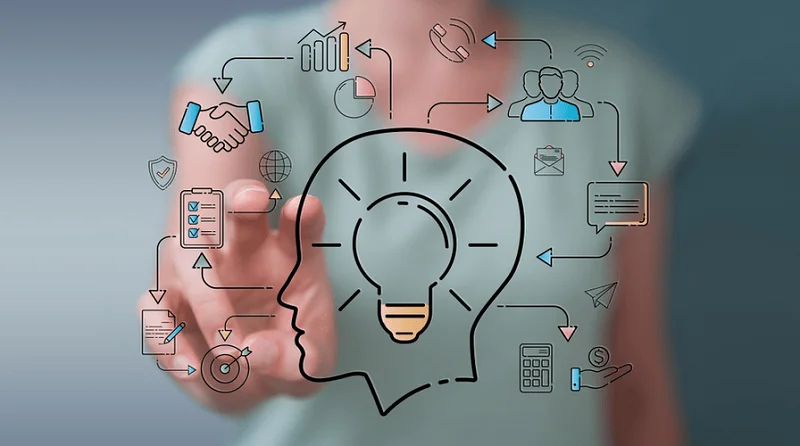Check out our DevOps guides and best practices to help you on your DevOps journey. Employees in high-performing DevOps teams were 2.2x more likely to recommend their organization as a great place to work. The SAFe DevOps Health Radar (Figure 5) is a tool that helps ARTs and Solution Trains optimize their value stream performance.
- SAFe’s CALMR approach to DevOps embodies this mindset, is central to the figure above, and permeates all aspects of the CDP.
- It arranges the capabilities into groups and maps the relationships they have to outcomes.
- In this step, actions can also be taken to visually label elements of the pipeline so that demarcation of responsibility is clear.
- Also, this continuous delivery maturity model shows a linear progression from regressive to fully automated; activities at multiple levels can and do happen simultaneously.
- These skills are critical in this era of constant digital disruption and innovation.
The Continuous Delivery Maturity Model is a 5×6 matrix, consisting of six areas of practice and five levels of maturity. Each of the matrix’s 30 elements defines a required discipline an organization needs to follow, to be considered at that level of maturity within that practice. Before we continue, we need a shared understanding of infrastructure as code. Keeping pace requires a new delivery system —a ‘software factory’ —which aligns teams and increases delivery speed while simultaneously increasing solution quality, security, and stability. Only then can the needs of customers and teams be predictably and effectively met. CI/CD introduces ongoing automation and continuous monitoring throughout the lifecycle of apps, from integration and testing phases to delivery and deployment.
Advanced
This continuous delivery model allows the business to receive a return on investment as soon as possible and also reduce risky and repetitive tasks. The pros and cons of the continuous delivery maturity model will help the company decide whether its implementation is the right step at this time. These teams use tools to improve software robustness, detect rare failure conditions before they affect users and automate complex big data systems.

For a rapid and reliable update of the pipelines in production, you need a
robust automated CI/CD system. This automated CI/CD system lets your data
scientists rapidly explore new ideas around feature engineering, model
architecture, and hyperparameters. They can implement these ideas and
automatically build, test, and deploy the new pipeline components to the target
environment. Many teams have data scientists and ML researchers who
can build state-of-the-art models, but their process for building and deploying ML
models is entirely manual. By following these best practices, organizations can implement a CDMM that helps them to achieve higher levels of maturity and to deliver software changes quickly and reliably, with minimal risk and downtime.
Implement and monitor
When you’ve put CI/CD into practice, you’ve established a CI/CD pipeline. Once the waste has been removed and only what is required has been kept and ordered, the next phase inspects the delivery pipeline to ensure that it’s operation is as clean as possible. Additional process and practice can easily creep into the delivery mechanism, especially in the early phases of Continuous Delivery adoption, when you are experimenting. The DevOps capability model is the structural equation model (SEM), sometimes referred to as the big friendly diagram (BFD). It arranges the capabilities into groups and maps the relationships they have to outcomes. In this post, I explain why a maturity model isn’t appropriate and what you should use instead.

Continuous Delivery 3.0 Maturity Model (CD3M) is a framework for assessing an organization’s maturity in implementing continuous delivery practices, created by the Netherlands National Institute for the Software Industry (NISI). It was created in light of recent trends and best practices in software development, such as cloud native and DevOps. At beginner level, you start to measure the process and track the metrics for a better understanding of where improvement is needed and if the expected results from improvements are obtained.
Similar to Continuous Delivery Maturity Model(
In this category we will describe a logical maturity progression to give structure and understanding to the different parts and levels it includes. To summarize, implementing ML in a production environment doesn’t only mean
deploying your model as an API for prediction. Rather, it means deploying an ML
pipeline that can automate the retraining and deployment of new models. Setting
up a CI/CD system enables you to automatically test and deploy new pipeline
implementations.
Continuous improvement mechanisms are in place and e.g. a dedicated tools team is set up to serve other teams by improving tools and automation. At this level, releases of functionality can be disconnected from the actual deployment, which gives the projects a somewhat different role. A project can focus on producing requirements for one or multiple teams and when all or enough of those have been verified and deployed to production the project can plan and organize the actual release to users separately. Moving to expert level in this category typically includes improving the real time information service to provide dynamic self-service useful information and customized dashboards. As a result of this you can also start cross referencing and correlating reports and metrics across different organizational boundaries,.
Collect data and metrics
Instead of having a separate process, disaster recovery is simply done by pushing out the last release from the pipeline like any other release. This together with virtualization gives extreme flexibility in setting up test and production environments with minimum manual effort. At the advanced level you will have split the entire system into self contained components and adopted a strict api-based approach to inter-communication so that each component can be deployed and released individually. With a mature component based architecture, where every component is a self-contained releasable unit with business value, you can achieve small and frequent releases and extremely short release cycles. The pinnacle of continuous delivery maturity focuses on continual process improvement and optimization using the metrics and automation tools previously implemented in stages two through four of the model.
Advanced practices include fully automatic acceptance tests and maybe also generating structured acceptance criteria directly from requirements with e.g. specification by example and domains specific languages. This means no manual testing or verification is needed to pass acceptance but typically the process will still include some exploratory testing that feeds back into automated tests to constantly improve the test coverage and quality. If you correlate test coverage with change traceability you can start practicing risk based testing for better value of manual exploratory testing.
How does pipeline automation support continuous delivery?
For any non-trivial business of reasonable size this will unfortunately include quite a lot of steps and activities. The end-to-end process of developing and releasing software is often long and cumbersome, it involves many people, departments and obstacles which can make the effort needed to implement Continuous Delivery seem overwhelming. These are questions that inevitably will come up when you start looking at implementing Continuous Delivery. You can hire a third-party consultant to evaluate your position in the DevOps maturity model or rely on self-assessment. If you prefer the in-house approach, maturity models by Atlassian, Atos, and Apexon are a great start.
CDMM provides a structured way for organizations to assess and improve their ability to implement continuous delivery practices, which can lead to increased efficiency, quality, and stakeholder satisfaction. Beginner level introduces frequent polling builds for faster feedback and build artifacts are archived for easier dependency management. Tagging and versioning of builds is structured but manual and the deployment process is gradually beginning to be more standardized with documentation, scripts and tools. A typical organization will have one or more legacy systems of monolithic nature in terms of development, build and release. Many organizations at the base maturity level will have a diversified technology stack but have started to consolidate the choice of technology and platform, this is important to get best value from the effort spent on automation. If you’re struggling with adopting or making the most out of DevOps, your first step should be to assess current software delivery processes against a DevOps maturity model.
Why a maturity model?
A maturity model doesn’t take into account the unique challenges facing your business – it may not even solve the kind of problems you’re facing. Continuous Delivery presents a compelling vision of builds that are automatically deployed and tested until ready for production. This deck presents a model for scoring yourself on the continuum and examples of how companies can decide what parts of CD continuous delivery maturity model to adopt first, later and not at all. The engineering team might have their own complex setup for API configuration,
testing, and deployment, including security, regression, and load and canary
testing. In addition, production deployment of a new version of an ML model
usually goes through A/B testing or online experiments before the model is
promoted to serve all the prediction request traffic.
